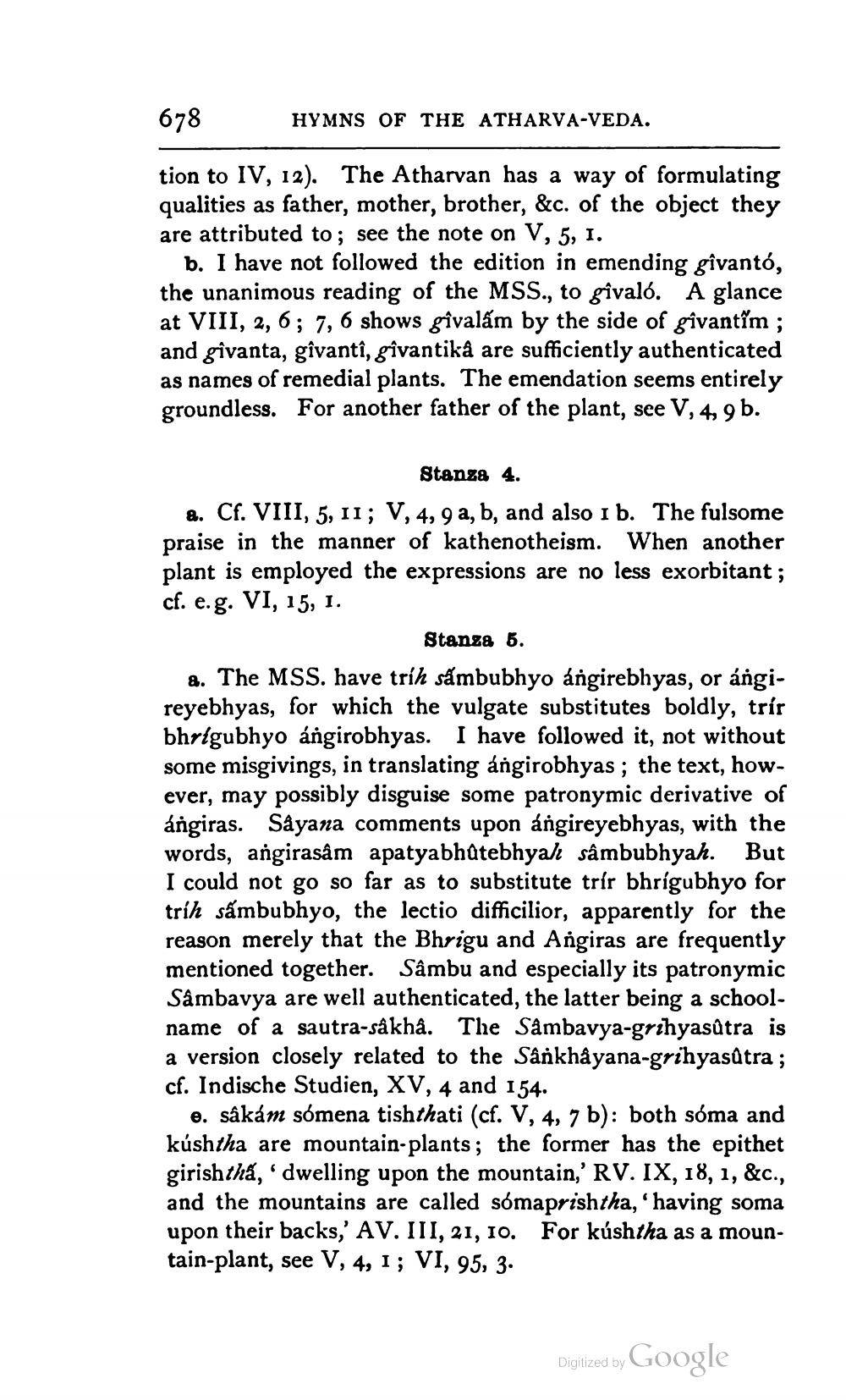________________
678
HYMNS OF THE ATHARVA-VEDA.
tion to IV, 12). The Atharvan has a way of formulating qualities as father, mother, brother, &c. of the object they are attributed to; see the note on V, 5, 1.
b. I have not followed the edition in emending givantó, the unanimous reading of the MSS., to gîvaló. A glance at VIII, 2, 6; 7, 6 shows givalấm by the side of givantim; and givanta, givantî, gîvantika are sufficiently authenticated as names of remedial plants. The emendation seems entirely groundless. For another father of the plant, see V, 4, 9 b.
Stanza 4.
a. Cf. VIII, 5, 11; V, 4, 9 a, b, and also I b. The fulsome praise in the manner of kathenotheism. When another plant is employed the expressions are no less exorbitant; cf. e.g. VI, 15, 1.
Stanza 6. a. The MSS. have trih sambubhyo angirebhyas, or angireyebhyas, for which the vulgate substitutes boldly, trir bhrigubhyo ářgirobhyas. I have followed it, not without some misgivings, in translating angirobhyas; the text, however, may possibly disguise some patronymic derivative of angiras. Såyana comments upon ángireyebhyas, with the words, angirasâm apatyabhatebhyah sâmbubhyah. But I could not go so far as to substitute trir bhrígubhyo for trih sámbubhyo, the lectio difficilior, apparently for the reason merely that the Bhrigu and Angiras are frequently mentioned together. Sâmbu and especially its patronymic Sâmbavya are well authenticated, the latter being a schoolname of a sautra-sâkhâ. The Sâmbavya-grihyasútra is a version closely related to the Sankhayana-grihyasútra ; cf. Indische Studien, XV, 4 and 154.
e. sâkám sómena tishthati (cf. V, 4, 7 b): both sóma and kúshtha are mountain-plants; the former has the epithet girish tha, ' dwelling upon the mountain,' RV. IX, 18, 1, &c., and the mountains are called sómaprishtha,'having soma upon their backs,' AV. III, 21, 10. For kushtha as a mountain-plant, see V, 4, 1; VI, 95, 3.
Digized by Google




